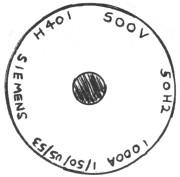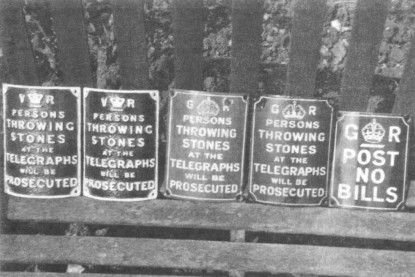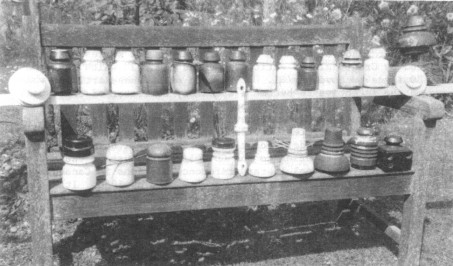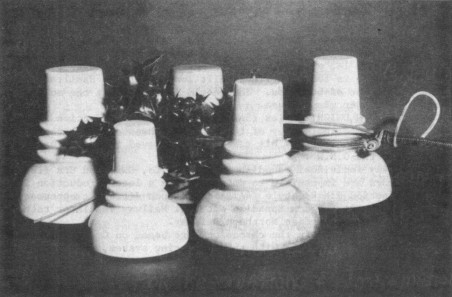Foreign Insulators
by Marilyn Albers
Reprinted from "INSULATORS - Crown Jewels of the Wire", April-May 1985, page 6
Good News!
No more wild guesses (and goof awards) for me. Jack Tod has just
put together a new book called INSULATOR PATENTS, 1880-1960. This is a
publication of his entire personal file covering 695 insulator patents -- a
gargantuan effort involving thousands of hours spent in research over the many
years he has been involved in this great hobby through his CROWN JEWELS column,
his books, and an ongoing correspondence with several of us who refuse to throw
away his letters because they contain more valuable information than a whole set
of encyclopedias!
I heartily recommend this book to all collectors. It's the "meat
of the coconut"! What a boon to those of us who want to know how a certain
insulator was used (and who hasn't?) or who need to look up and identify a
"whatisit".
To be sure that you receive a copy of this new book,
you'll need to contact Jack in advance of the printing to be made on July 8,
1985. The price is $20.00 plus 80 cents shipping.
THE KOOLERY
This unique insulator, known to us only as the "koolery", has been
a real puzzle to collectors for a long time. It is pictured on page 181 of
Milholland's book MOST ABOUT GLASS INSULATORS, third edition, and page 213 of
his fourth revision. It has no CD number and apparently was found in Terrace,
B.C., Canada.
Laura Van der Endt (Sydney, Australia) tells me she has that
insulator, and that it is an older type lightning arrester used on the overhead
electrical distribution system in Holland, where she grew up. She says it was
made by a company called Siemens, and that there is a Siemens in both Germany
and England, but it is not clear where the insulator was made. Her guess would
be England, as the glass part is clear with a greenish tint, which would be
similar to that made by Pilkington Brothers, where such glass was made for high
voltage insulators. This plant formerly operated at St. Helen's, Lancashire, before it merged with Sediver of France.
Laura says the insulator has a copper
base and that the marking is not on the glass, but rather on the metal plate
underneath the top skirt. The sketch at the right, while not to scale, gives you
an idea of how the marking looks.

"The more I think about it," she
says, "the more I tend to think it was made in England. Siemens is an
electrical concern in England that also exported insulators with metal parts and
telegraph poles to Australia."
Laura is sending me some of these insulators, and then I'll be able to tell
exactly what they look like -- whether they have threaded pin holes, etc. But in
the meantime, I don't even have a photo of the insulator other than the one in
Milholland's book, and it doesn't show the "guts'.
I don't know how many
there will be, but I may decide to trade any extras, so if you are interested,
you may write to me. At any rate, I'm pleased that the mystery is cleared up,
and that we have the facts about the Koolery.
DON'T THROW STONES!
In my last month's CROWN JEWELS column (January), I told you about meeting
David Hibbert, who is from Herts, England. He and his friend Dominic Allen had
come to Gatwick Airport to meet my husband and me before we continued on to
Guernsey to visit Keith Neal.
One very happy result of some trading David and I
did was that I acquired one of those curved "pole plates" that used to
be attached to telephone poles in England. The one I have is the second from the
left in the photo shown below. Both of the plates to the left are made of heavy
cast iron with raised letters, and the others are made of a vitreous enamel. VR
is for Queen Victoria, and GR is for King George V. David tells me the cast iron
VR pole plates are reproductions, but molded from an original. I'm very proud to
have one of these, but am resisting the temptation to attach it to a pole, for
fear someone else will think it is neat, too, and walk off with it!

David also shared with me the following picture of his personal collection.
What a great selection of Langdons, Cordeaux's, Potheads, Varleys and oil
insulators! And even though the season is past, I wanted to show you how he
incorporated five of his Langdon telegraph insulators into an attractive
Christmas arrangement! Thanks, David.


| 